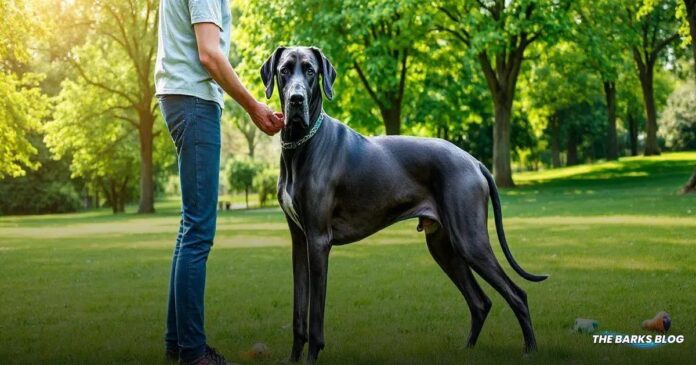To help your Great Dane live a longer, healthier life, it’s important to understand their specific needs, including a lifespan of 8 to 10 years and common health issues like bloat and hip dysplasia. Ensure they receive at least two hours of exercise daily, a balanced diet of 4 to 6 cups of high-quality dog food, and regular veterinary check-ups for early health problem detection.
The Great Dane dog breed is known for its loyalty and friendly nature. However, they have one of the shortest lifespans among dog breeds, averaging between 8 and 10 years. This article provides essential tips to help ensure your Great Dane lives a long, happy life.
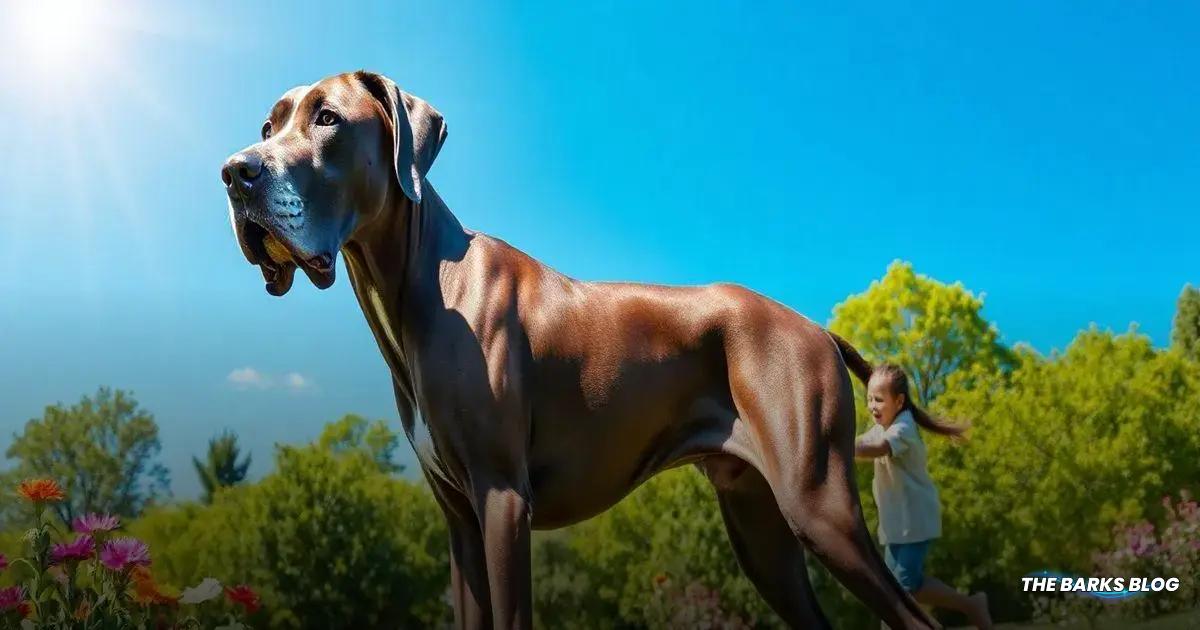
Understanding Great Dane Lifespan
The Great Dane has an average lifespan of around 8 to 10 years, which is notably shorter than many other breeds. This shorter lifespan can be attributed to several factors, primarily their large size. Larger dogs often reach senior age quicker than their smaller counterparts, which can lead to age-related health issues arising sooner.
Some Great Danes may live as little as 6 or 7 years, while others can reach up to 12 years with proper care. Genetics also play a significant role in their longevity. Great Danes are more susceptible to certain genetic complications that can affect their health, leading to a shorter lifespan overall.
To help your Great Dane live a longer life, it is crucial to provide them with regular veterinary care, a balanced diet, and plenty of exercise. Understanding the unique health needs of this breed can make a substantial difference in their quality of life and longevity.
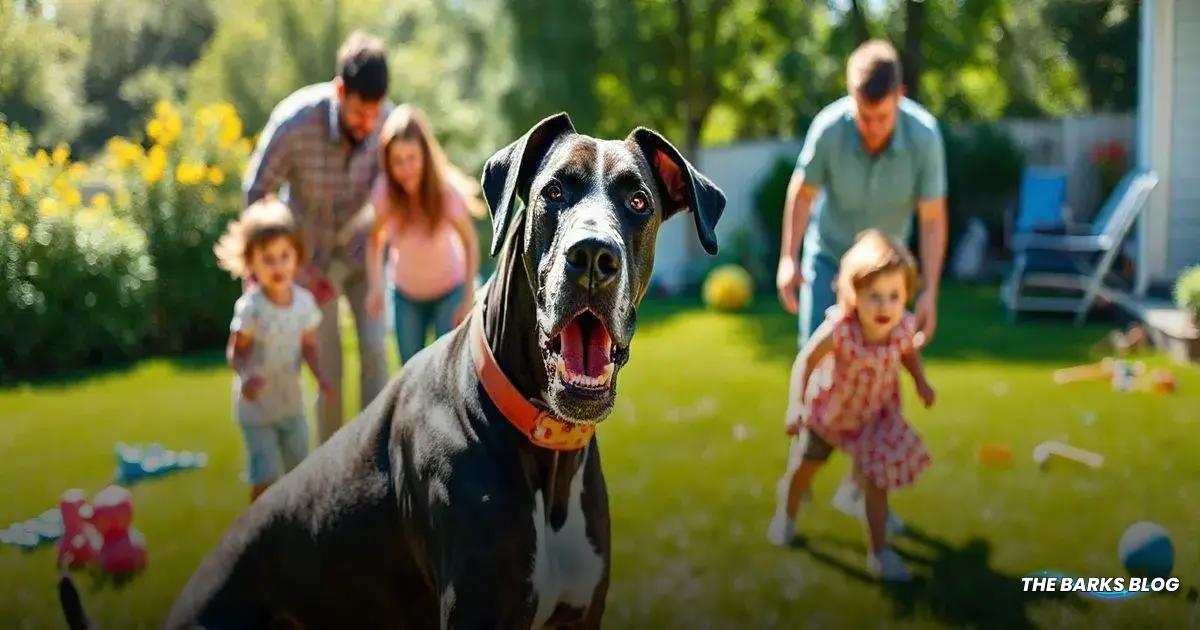
Common Health Issues in Great Danes
Great Danes, like many large breeds, are prone to certain health complications that can impact their quality of life. Being aware of these issues can help you take proactive steps to ensure your dog’s well-being.
Some common health complications that Great Danes may face include:
- Skin Allergies or Irritation – Great Danes can develop environmental or food allergies that result in skin irritation and allergy symptoms. Regular grooming and monitoring their diet can help manage these issues.
- Bloat – This life-threatening condition occurs when gas builds up in the stomach, causing it to twist. It requires immediate veterinary attention. Signs include a distended abdomen and signs of discomfort.
- Hip Dysplasia – A genetic condition where the hip joint doesn’t fit properly into the hip socket, leading to pain and mobility issues. Regular vet check-ups can help manage this condition.
- Thyroid Problems – Hypothyroidism is common in Great Danes and can lead to various health issues. Regular blood tests can help monitor thyroid levels and manage treatment effectively.
- Cardiomyopathy – This heart disease leads to the enlargement of the heart muscle and can cause serious health problems. Regular veterinary visits can help catch this condition early.
If you notice any concerning symptoms in your Great Dane, such as lethargy, difficulty moving, or changes in appetite, consult your veterinarian immediately. Early diagnosis and treatment are key to managing these health issues and ensuring a longer, healthier life for your Great Dane.
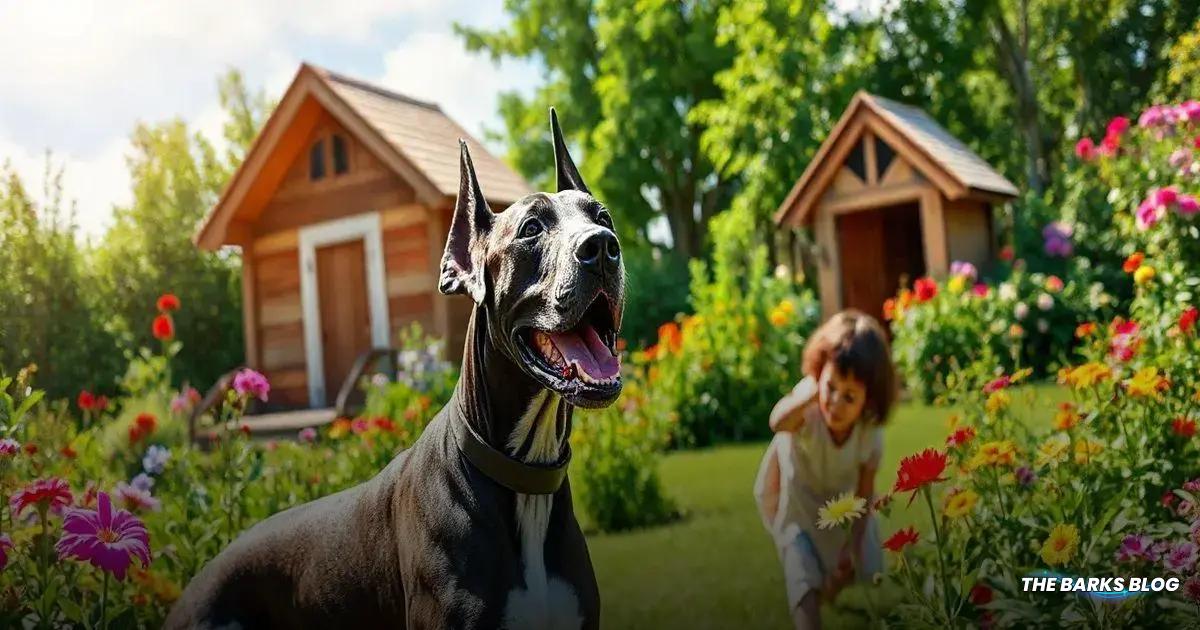
Tips for a Longer Life
To help your Great Dane live a longer, healthier life, consider the following essential tips:
1. Be Cautious of Where You Purchase Your Great Dane
Choosing a responsible and ethical breeder is crucial for ensuring your Great Dane has a healthy start in life. Poor breeding practices can lead to genetic issues that affect their health. A reputable breeder will provide proper documentation, answer your questions, and may even require you to return the dog if you can no longer care for them.
2. Give Them Lots of Regular Exercise
Great Danes need plenty of exercise to stay happy and healthy. Aim for at least two hours of exercise each day, which can include walks, playtime in a fenced area, or trips to dog parks. Regular physical activity helps maintain their weight and overall health.
3. Make Sure You’re Feeding Them Enough
Nutrition is vital for the health of your Great Dane. They typically require between 4 to 6 cups of high-quality dog food daily, depending on their age and size. Be mindful of their caloric intake and avoid overfeeding, as obesity can lead to serious health issues.
4. Exercise Their Mind
Mental stimulation is just as important as physical exercise. Engage your Great Dane with training sessions, puzzle toys, and social outings to keep their mind sharp. This can help prevent anxiety and destructive behaviors.
5. Don’t Forget Grooming and Dental Care
Regular grooming, including brushing and professional grooming, is essential for maintaining your Great Dane’s coat and skin health. Additionally, dental care is crucial; regular tooth brushing and vet check-ups can prevent dental disease, which can affect their overall health.
6. Schedule Vet Visits and Practice Preventative Healthcare
Routine veterinary visits are vital for catching health issues early. Make sure your Great Dane is spayed or neutered and stay up-to-date on vaccinations. Providing a comfortable environment with supportive bedding can also help ease joint stress.
By following these tips, you can help ensure your Great Dane lives a long, happy life by your side.
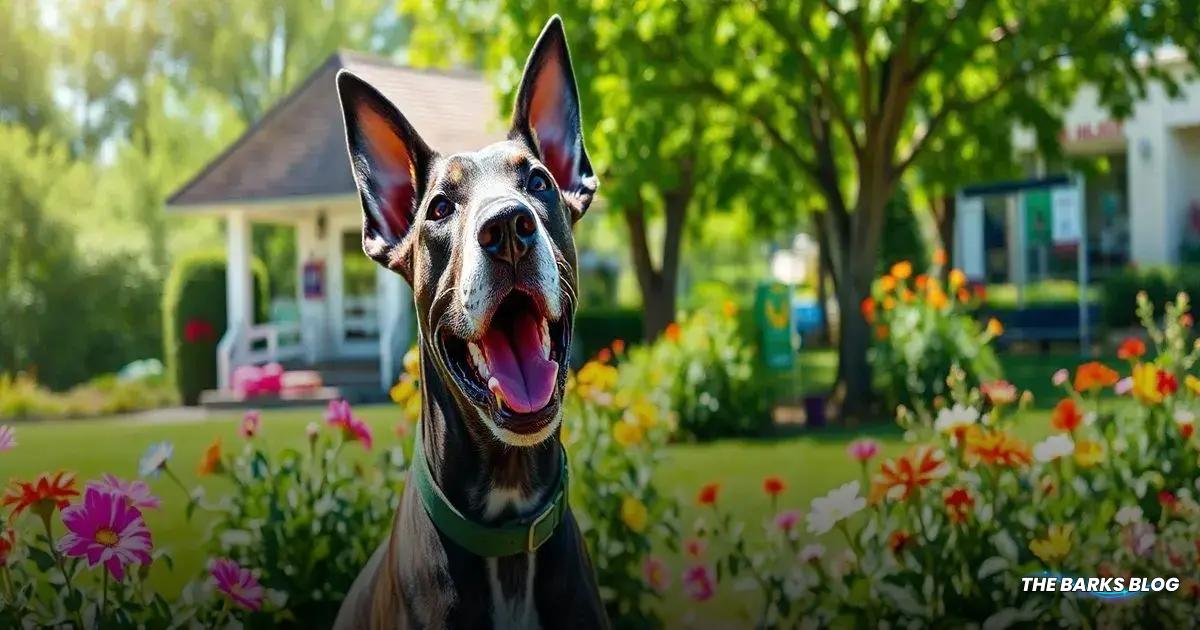
When to Visit the Vet
Knowing when to take your Great Dane to the vet is crucial for their health and longevity. Certain symptoms can indicate serious health issues that require immediate attention. Here are some signs that your Great Dane needs to see a veterinarian:
Limping or Trouble Moving: If your dog is limping, having difficulty moving, or unable to move at all, it could indicate a serious injury or joint issue that needs prompt evaluation.
Labored Breathing: Difficulty breathing or labored breathing can be a sign of respiratory distress or heart problems. If you notice your dog struggling to breathe, seek veterinary care immediately.
Unexplained Lethargy: If your Great Dane suddenly becomes lethargic and shows little interest in activities they usually enjoy, it may be a sign of an underlying health issue that needs to be addressed.
Vomiting, Diarrhea, or Loss of Appetite: Persistent vomiting, diarrhea, or a significant decrease in appetite can indicate gastrointestinal issues or other health concerns that require veterinary attention.
Distended Abdomen: A swollen or distended abdomen can be a sign of bloat, a life-threatening condition that requires immediate medical intervention.
Seizures or Unconsciousness: If your Great Dane experiences seizures or becomes unconscious, this is an emergency situation that requires immediate veterinary care.
Bleeding: Any signs of bleeding, whether external or internal, should prompt an immediate visit to the vet, as it can indicate a serious health issue.
As soon as you notice one or more of these concerning symptoms, contact your veterinarian or an emergency veterinary clinic. Early intervention is often key to ensuring your Great Dane receives the care they need and can significantly impact their health and lifespan.
Conclusion
Caring for your Great Dane involves understanding their unique needs and potential health issues.
By following the tips provided, such as ensuring proper nutrition, regular exercise, mental stimulation, and routine veterinary visits, you can help your Great Dane live a longer and healthier life.
Remember that early detection of health problems is crucial, so be attentive to any changes in behavior or symptoms.
With the right care and affection, your Great Dane can thrive and be a beloved companion for many years to come.
FAQ – Frequently Asked Questions about Great Dane Care
What is the average lifespan of a Great Dane?
The average lifespan of a Great Dane is between 8 to 10 years, although some may live as long as 12 years with proper care.
What are common health issues faced by Great Danes?
Common health issues in Great Danes include skin allergies, bloat, hip dysplasia, thyroid problems, and cardiomyopathy.
How much exercise does a Great Dane need?
Great Danes require at least two hours of exercise each day, which can include walks, playtime, and visits to dog parks.
What should I feed my Great Dane?
Great Danes typically need between 4 to 6 cups of high-quality dog food daily, depending on their age and size. It’s important to monitor their caloric intake to prevent obesity.
When should I take my Great Dane to the vet?
You should take your Great Dane to the vet if you notice symptoms such as limping, labored breathing, unexplained lethargy, vomiting, a distended abdomen, seizures, or any signs of bleeding.
How can I help my Great Dane live a longer life?
To help your Great Dane live longer, ensure they have a balanced diet, regular exercise, mental stimulation, proper grooming, and routine veterinary care.


